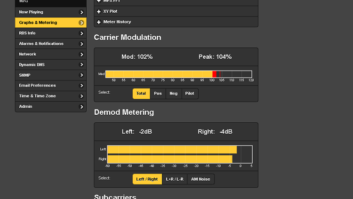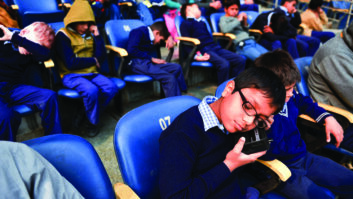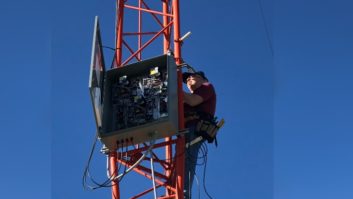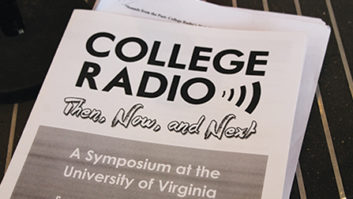As another year draws near to a close, we once again reset our expectations on HD Radio’s success.
Now we are told it’s 2009 that will be the big year for the format to take off. Maybe or maybe not. Let’s look at what we know lies ahead.
First, consider the overall context.
To some extent, and as we’ve said here before, the slow start that HD Radio has experienced is a challenge that every voluntary format conversion faces. Without a deadline, only market forces can drive the transition. And as noted previously, reasonable consumer satisfaction with the status quo suppresses these market forces.
Nevertheless, like baseball, hope springs eternal, and when spring training comes around, every team has a shot at the new season’s championship. So the cry of “Wait ’til next year!” rings out once again for HD Radio’s prospects.
Unlike baseball, however, there are a finite number of seasons in which to play the consumer electronics game before the public (and CE retailers) tire of hearing the same story. Chicago Cubs fans they’re not.
Thus the pressure builds with each successive year to show real growth, and 2009 may indeed have to be a pivotal year if HD Radio receivers are to remain a viable product in the marketplace.
New prospects
That said, there are indeed a number of factors that will likely hit the market in 2009 that could alter the currently shallow trajectory of HD Radio, and put enough of an inflection point in the curve to keep hope alive for the format.
Besides the continued incremental growth of receivers and expanding inclusion of HD Radio capability in car radios that have been announced, the truly new elements expected in 2009 include the first portable form factors, more devices supporting HD Radio tagging, the addition of Conditional Access (CA) features, and the possibility of integrated storage in HD Radio receivers. We may even see the first forays into improved visual displays, perhaps anticipating broadcasters’ inclusion of electronic program guide (EPG) data, which is likely to emerge in 2010.
On the regulatory side, two issues are on the table: Mandatory inclusion of HD Radio receivers in Sirius XM devices (and/or vice versa), and the digital power boost.
If either of these initiatives makes its way into FCC rules in 2009, the rollout could benefit significantly (although any such impact would probably not be truly felt until later years). But as we well know, these regulatory processes march to their own beat, and forecasting if or when final decisions will be taken is certainly a risky business.
Among these upcoming items, the introduction of portable HD Radio receivers in 2009 will probably be most influential.
The lack of portable receivers for a medium that generally touts portability as its greatest asset has been a critical handicap to the transition so far. Well-designed and properly priced portable devices that include HD Radio capability could finally make the format truly “iBiquitous.” This trend was also borne out in the U.K. DAB upswing, where portable receivers have been the most successful form factor.
Regarding CA, while it has been widely promulgated as a method of providing future “premium” multicast channels that are only available to subscribing users (or for enabling radio reading services by providing the requisite protection to satisfy copyright holders), there is one other proposed application that is not yet so well known.
It involves a proposal to use the HD Radio system’s CA capability, along with anticipated storage-capable receivers, for delivery of targeted advertising — even on the main HD Radio channel.
This approach would leverage the unique ID of each HD Radio receiver to deliver specially targeted ads to individual receivers that had been specified by their owners to be interested in certain advertising content (by demographic or other cohorts, such as “I’m going to buy a new car sometime this year”).
Targeted ads would be encrypted by the CA system, and delivered in greater-than-real time fashion via HD Radio datacasting. (For example, a 30-second spot encoded at 48 kbps HDC could be delivered in about 5 minutes over a 5 kbps datacast channel.) Individual receivers would recognize specific ads via their associated metadata, and locally store only the ads that the radio’s owner had opted in to receive.
Once the complete ad is captured by the receiver, it waits for a trigger in the currently tuned audio broadcast channel (which the broadcaster would incorporate into an ad break), and substitutes the locally stored ad for the general broadcast spot, after which it returns to the regular broadcast channel.
The broadcaster could insert such a trigger ahead of a “replaceable” (and therefore probably discounted) broadcast spot, or simply run the targeted ads over station promos or music breaks, as is commonly done for local avails in network feeds. Cooperating stations can even trigger an ad inserted into one station’s audio broadcast that was delivered to the receiver by a different station’s datacast.
Whether this idea is ever implemented remains a very large question, but it has been demonstrated by NDS, developer of RadioGuard, the CA system used by HD Radio (and described in this column in the Sept. 1, 2007 issue). Very little broadcaster bandwidth and receiver storage is required, and NDS cites research from the TV world showing that 10 percent audience participation in the program could result in a 100 percent increase in a station’s advertising revenue.
A moving target
A final element to consider here is that FM radio has not stood still during this process.
The recent move to include music tagging in the RT+ enhancement to RBDS is a good example. If analog radio continues to improve its service, this makes it even harder for HD Radio to break through.
Broadcasters also continue to expand and improve their Internet-delivered services, and as mobile broadband takes off, this will provide an even more competitive environment for portable HD Radio devices to enter next year.
Thus HD Radio has to compete not only with the high consumer satisfaction of analog FM radio, but also to confront the growing appeal of Internet radio, now delivered both wired and wirelessly. It’s a tough hill to climb, and time may be running out. Yet we can see that there are some important, potential game changers ahead, and perhaps other critical developments we are not yet aware of will also emerge.
The lack of much opera on the today’s radio notwithstanding, it isn’t over until Brunhilde sings …
Skip Pizzi is contributing editor of Radio World.






